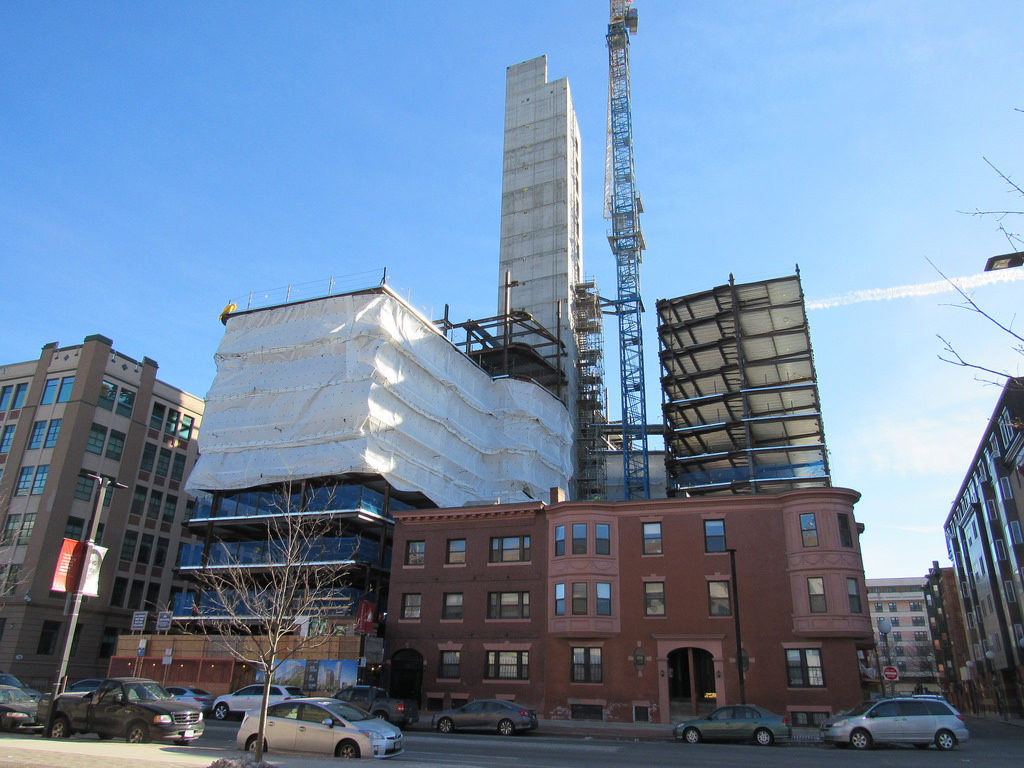Editorial: New housing is not enough to stop gentrification
October 10, 2018
In the last year, Northeastern renovated a community playground and built a new apartment building on the edge of campus in an effort to improve relations with its neighboring communities. But, for a city that is just as famous for its struggle with inequality as its plethora of Dunkin Donuts locations, this should only be considered a start.
The cost of living on Northeastern’s campus is so high that students are often forced to find housing elsewhere. With only one semester-long rooming option under $4,000 — a single bedroom that must be split by three people — the university doesn’t exactly provide a range of economically conservative dorm choices.
As long as this remains the status quo, Northeastern students will continue to flock to the lower-priced housing in Roxbury, furthering the disestablishment of long-standing communities. The university needs to give back more to these local residents, considering how much it takes from them.
The city ranks seventh on Huffpost’s list of most racially segregated metropolitan areas in America, and just this year, The Boston Globe published a seven-part series detailing the immense social, racial, economic and class disparity that is systematically imposed on Boston’s citizens.
Compounding this complex imbalance, and in common with many other major cities, Boston is subject to an increasing amount of gentrification. We at The News have frequently spoken about Northeastern’s role in this procedure, without finding any resolution.
To Northeastern’s credit, steps taken in recent months do give back to the neighborhoods they so often take from. For instance, the opening of Carter Playground last month garnered city-wide approval for fostering a greater sense of community with its frequent use by neighborhood residents.
But gentrification, or the process of “revitalizing” economically unproductive parts of a city, has negatively affected low-income people. As Northeastern students seek living spaces close to campus, they effectively increase profits for the real estate market while displacing low-income residents.
Northeastern recently opened the leasing office for LightView Apartments on Columbus Avenue, a 825-bed apartment complex which should theoretically aid this issue. But the least expensive accomodation is valued at $5,336 per semester. Considering that the West Village housing units are financially out of reach for many students, which are on average only $200 more per month, LightView is hardly a solution.
One obvious solution is to build more affordable housing for students. Another highly effective way to give back to the community would be to increase funding for the public.
Each year, Boston requests that Northeastern, as well as other nonprofit organizations exempt of property tax, make voluntary contributions in cash and community programs. These payments are made through the Payment in Lieu of Taxes, or “PILOT” program, which targets nonprofit institutions that own more than $15 million worth of property.
Seven of the eight colleges with the highest valued property paid less than what was requested, including Northeastern University, which paid only $1.5 million of the $11.2 million the city of Boston asked for in 2018, a fraction of the $1.4 billion that Northeastern would have owed in property taxes.
As students of Northeastern, we need to advocate that the university pave the way for Boston to actively decrease gentrification, both by increasing affordable housing and public funding.
*Correction: An earlier version of this story mistakenly stated that LightView had recently opened. It’s slated to open in August 2019.







